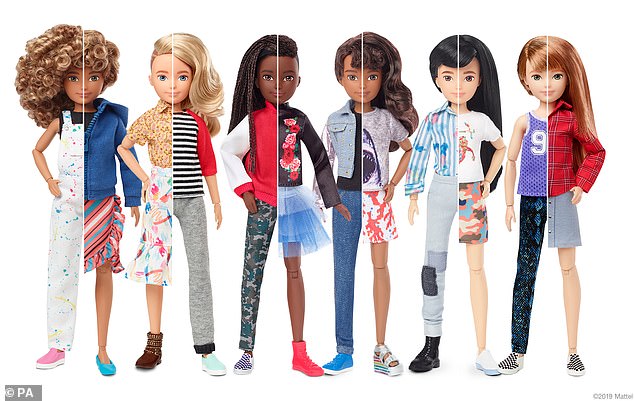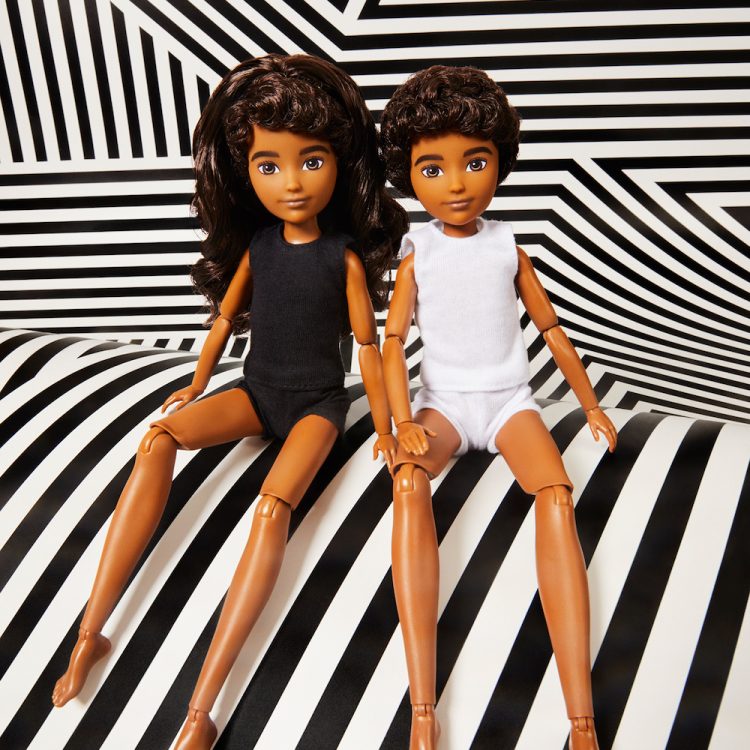Mattel Releases Gender-Neutral Dolls
We want to be kids again.
The toy aisle is a markedly gendered place. On one side you may see race cars, monster trucks, crime-fighting ninja turtles, superheroes, cops, robbers, all in flame-colored font and dark packaging. On the other, baby animals, baby pink, baby dolls, flowers, unicorns, hair salons. Mattel, the creator of Barbie, has long stood its claim on the pink side of the aisle, coming under fire for unrealistic expectations for women and a lack of diversity. However, Mattel’s latest “Creatable World” line seeks to challenge this binary with the unveiling of new, gender-neutral dolls released September 25. Mattel included young boys and gender-fluid children in the test groups for these dolls, deciding on an initial line of six different interchangeable figures.
“There were a couple of gender-creative kids who told us that they dreaded Christmas Day because they knew whatever they got under the Christmas tree, it wasn’t made for them,” Monica Dreger, head of consumer insights at Mattel, told Time. “This is the first doll that you can find under the tree and see is for them because it can be for anyone.”
When first unboxed, the Creatable World figurine arrives with a short haircut and a decidedly modest tank top and shorts—gone are the days of plastic boobs and eunuch Ken dolls. Kids may choose to add longer hair to their doll or keep the original style while they’re adding a multitude of accessories and clothing, spanning from either end of the masculine-feminine spectrum. There’s tulle skirts, shark t-shirts, camo pants, and shiny bomber jackets. (If your child grows up wanting to be a member of Queer Eye, blame Mattel.) The dolls run for about $30 and go by the various pronouns: she, he, they, and xey.

The new doll could be potentially life-affirming for any child looking to experiment with their gender, feeling constricted by the current milieu of pink and blue. The explicit nod towards nonbinary genders marks a frontier previously untapped by the toy market. Most of all, Creatable World exposes children to options of gender presentation most millennials could not consider until late adolescence. This is not the reality for Gen Z. A recent Pew study reported that 35% of “zoomers” (born 1995-2015) personally know someone who uses gender-neutral pronouns. Gen Z celebrities such as Jaden Smith and Amandla Stenberg have long vocalized their commitment to pushing beyond the gender binary, proving that gender neutrality exists well beyond college gender studies courses.
The name “Creatable World” also points to Mattel’s larger goal of providing children with toys that give open-ended prompts, rather than set instructions. This blank canvas serves as a backdrop for the child’s imagination and wishes, whether they stay in the traditional or not.
“We’re not in the business of politics,” President Richard Dickson said, “and we respect the decision any parent makes around how they raise their kids. Our job is to stimulate imaginations. Our toys are ultimately canvases for cultural conversation, but it’s your conversation, not ours; your opinion, not ours.”
Although recent efforts to push young girls into traditional male interests have begun the gender conversation, there is still a marked disinterest in giving young boys “feminine” toys. Outdated notions that feminizing boys will give them undesirable characteristics or confuse them in the future erases the reality that children raised as boys may grow up confused no matter what. Mattel acknowledges that parents might not be happy with the new toys, but they’re focused on what kids want, and have been wanting.
“If all the parents who saw the dolls said, ‘This is what we’ve been waiting for,’ we wouldn’t be doing our jobs,” Dreger said. “That would mean this should have already been in the market. So we’re maybe a little behind where kids are, ahead of where parents are, and that’s exactly where we need to be.”
